What’s WRONG with Goldendoodles?
In general, Goldendoodles are a great family dog.
They have a lot of energy and love to be around people. However, just like any dog, they have some common issues that you may have to deal with if you choose to adopt one.
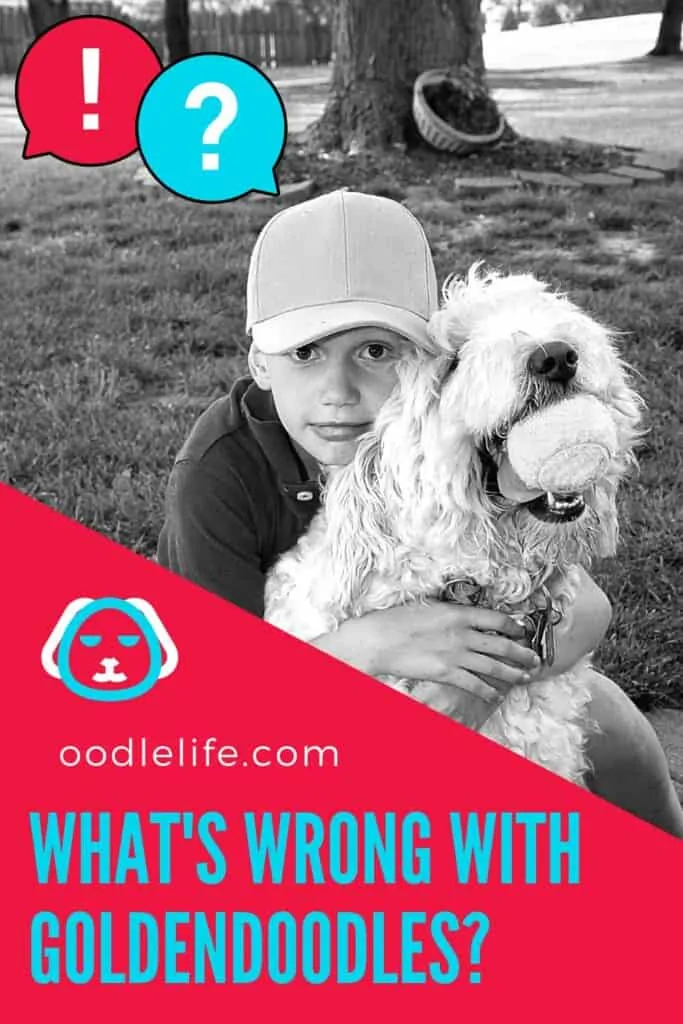
To help you feel more prepared, this article will cover some of a Goldendoodle’s possible behavioral and other issues and give some tips on how to handle them.
Keep in mind, though, that every dog is different, so your Goldendoodle may have all of these problems or none of them. These are simply the most common.
Separation Anxiety/Boredom
Separation anxiety is probably the biggest problem that Goldendoodle owners face. Like all dogs, Goldendoodles are pack animals.
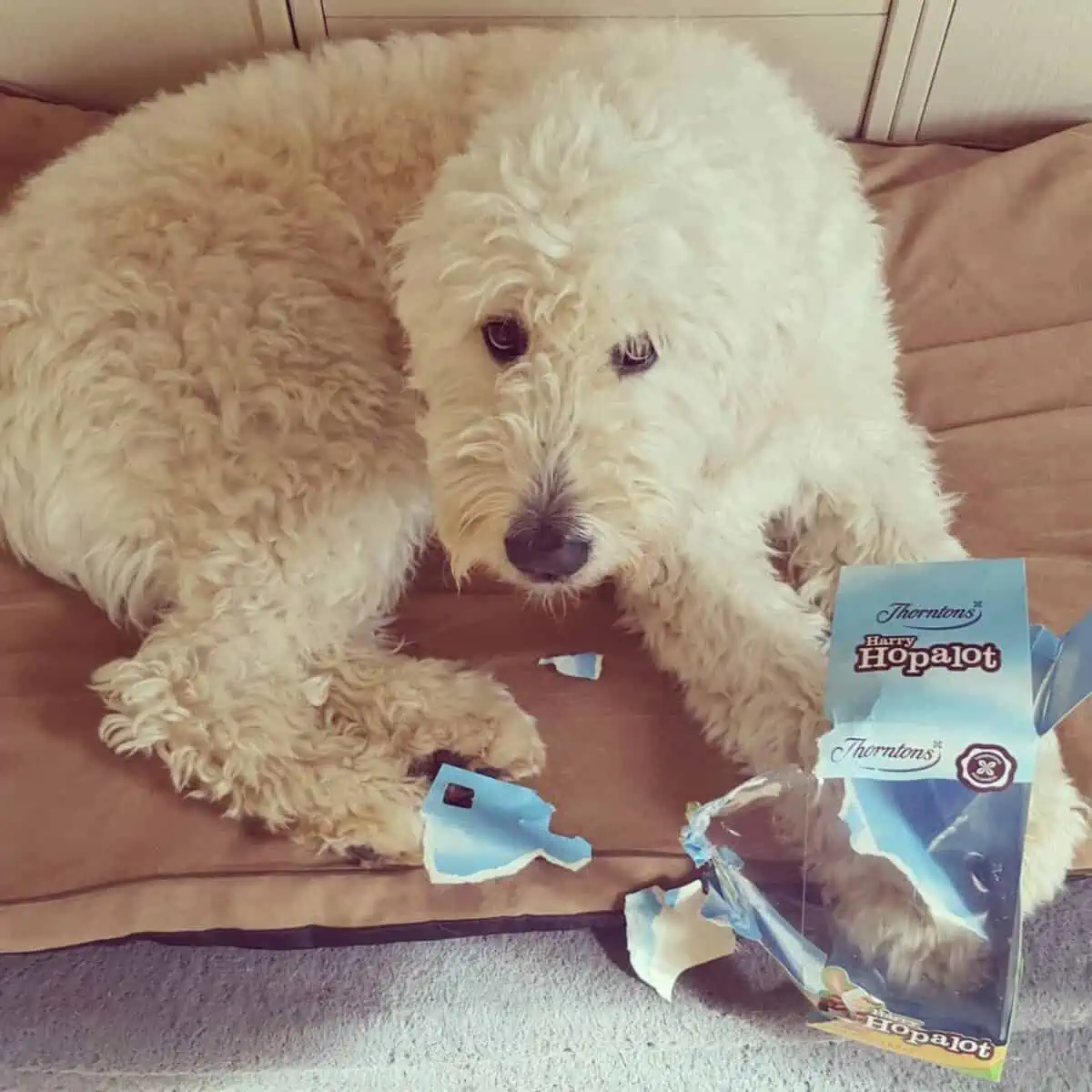
They’re naturally curious and love socializing with people and other dogs. This can be a desirable trait since they are usually great at meeting new people and will always want to be near you.
The downside of that energetic and social nature is that they may become stressed or bored when left alone for long periods.
Given that as owners, we usually need to go to school or work, this can be a real issue. This anxiety is often worse for puppies than for adult Goldendoodles.
For some Goldendoodles, anxiety can lead to destructive behavior. This is often chewing on or destroying furniture, carpet, doors, or any other object you likely don’t want to be damaged.
Goldendoodles may also whine or bark excessively, or you may come home to find that a house-trained dog has peed or pooped on the floor.
The reason why dogs do this is that they are scared that you won’t come back. Or, with a lack of things to do, they may simply be bored and trying to find ways to entertain themselves.

To help curb those destructive behaviors and boundless energy, make sure to give your dog many exercises when you’re at home with them. When you leave, provide them with plenty of toys to play with, so they won’t be tempted to destroy other things in the house.
You can mentally and physically exercise your dog indoors – get inspiration from our list of 35 indoor dog games and activities.
A puzzle toy or frozen Kong is a great way to distract your Goldendoodle for ages when you do leave the house. It keeps their mind distracted and reduces separation anxiety!
Try to keep shoes and valuable objects out of your dog’s reach. Use solutions like Grannick’s Bitter Apple spray (Amazon) to discourage your dog from chewing on the things you can’t hide or protect.
This kind of conditioning may take a long time to sink in, but eventually, your dog will start to calm down and get accustomed to the routine of you leaving the house.
Excessive Barking
Excessive barking can be tied to separation anxiety, as previously mentioned, but there can also be other reasons behind it. One of these is being removed from their mother too early.

A puppy’s time spent with their mother and their littermates is incredibly essential for their development because they start to learn appropriate behavior. Most agree that a puppy should be kept with its mother for a minimum of eight weeks before being sent to a new home.
If not, problem behaviors like excessive barking can arise. While that may be cute when they’re a little puppy, it will only annoy you and your neighbors when the dog becomes an adult.
Other reasons behind excessive barking include boredom or loneliness. Goldendoodles require lots of exercise and attention, so if they’re not getting enough of one or both of these, they may let you know by barking.
The best way to keep your Goldendoodle dog from barking too much is by giving them proper socialization and exercise. When a dog barks, it’s typically because they either want something or because they’re alerting you of an unfamiliar situation.
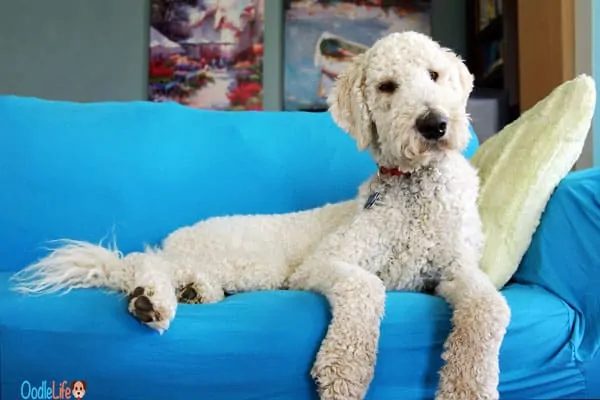
That’s why it’s so important to introduce your dog to as many experiences as early as possible. This means that when they face similar problems in the future, they will know what to expect and won’t feel the need to bark.
Another strategy would be to teach your dog to bark and quiet down on command. You can do this in the same way you teach any other trick, by giving them treats and praise whenever they do what you ask them to do.
A final option is to use noise bark collars, which emit a high-pitched sound or a shock whenever a dog barks. However, this is not preferred as it may actually teach the dog to not bark at all, regardless of the situation, which shouldn’t be the goal.
A dog’s bark is its way of communicating with us, and if a dog ever needs to alert their owner of something important, it should be allowed to.
Curiosity and Distractibility
Goldendoodles are highly intelligent dogs, two of the most intelligent dog breeds out there—the Golden Retriever and the Poodle. This makes them quick to learn, but it also makes them highly curious and, thus, distractible.
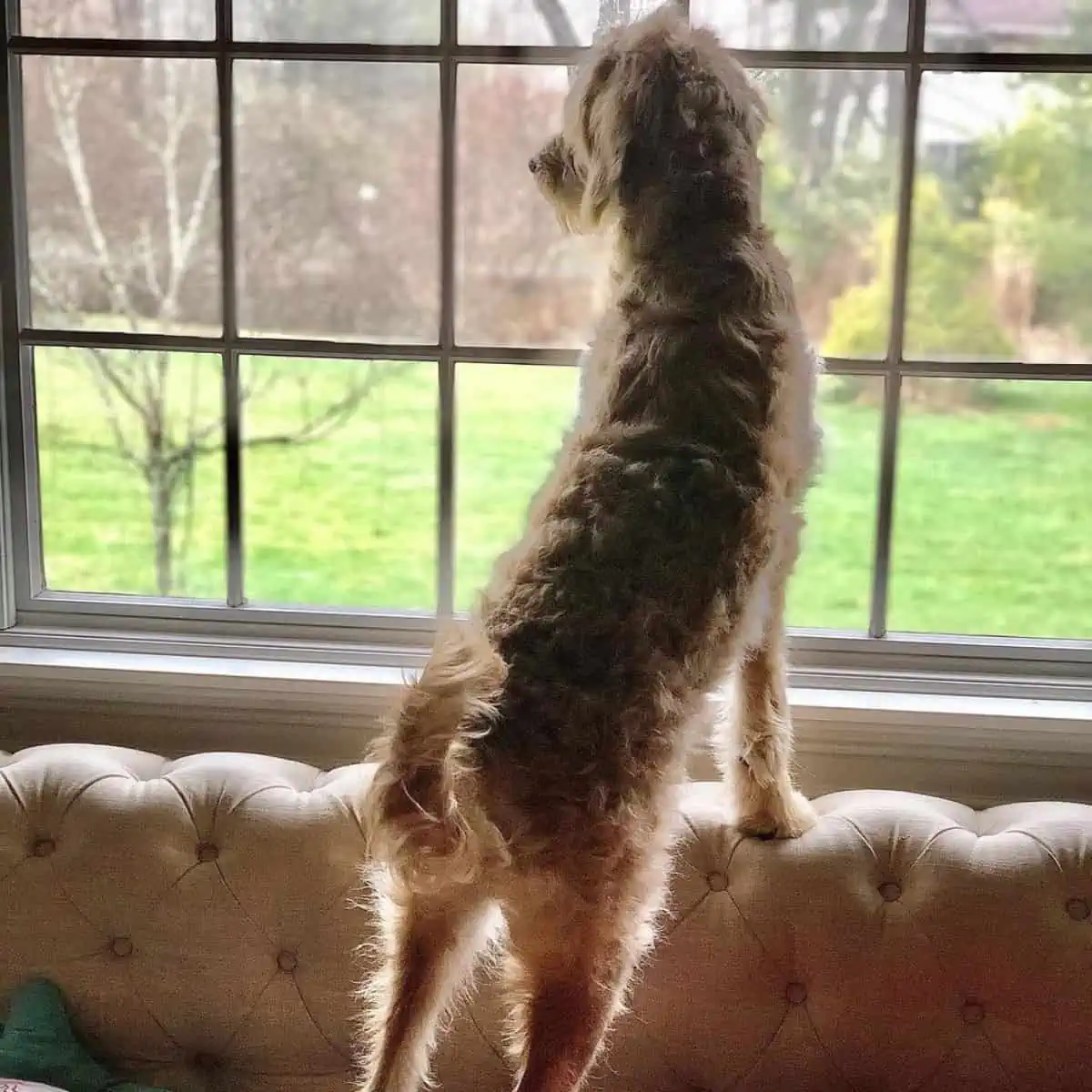
When you take them to the park or introduce them to a new person or animal, their first inclination will be to investigate. This sometimes leads Goldendoodles to chase after animals like cats or squirrels, or even people.
They’re not typically doing this in an aggressive or territorial way. Aggressive behavior in Goldendoodles is relatively uncommon. When it appears, it’s usually a sign of inadequate training or socialization.
Aggressive or not, though, it’s not ideal for your dog to tug on their leash during walks or chase after anything interesting they see, as this can cause someone to get hurt.

Some ways to stop this behavior are to train the dog to heel when walking with them, starting with a leash, and then, if you live in an area where it’s legal, without one.
You could also use that distractible nature to your advantage by using a treat or a toy to bring their attention back to you whenever they try to dash off and make sure to praise them each time they ignore a potential distraction. (See the best toys for Goldendoodle dogs)
Finally, help channel that instinctive drive to chase – into activities and games such as fetch, tug-of-war, tag, or hide and seek. That way, you can work with your dog’s natural inclinations while making sure you, your dog, and everyone else around you stay safe.
Shedding and Grooming
This is not a behavioral problem, but it’s something that you need to consider before adopting a Goldendoodle. The Goldendoodle breed is generally advertised as a hypoallergenic, non-shedding dog. Still, the truth is that there are no dogs out there that genuinely never shed. The difference is just in how much or how little they shed.
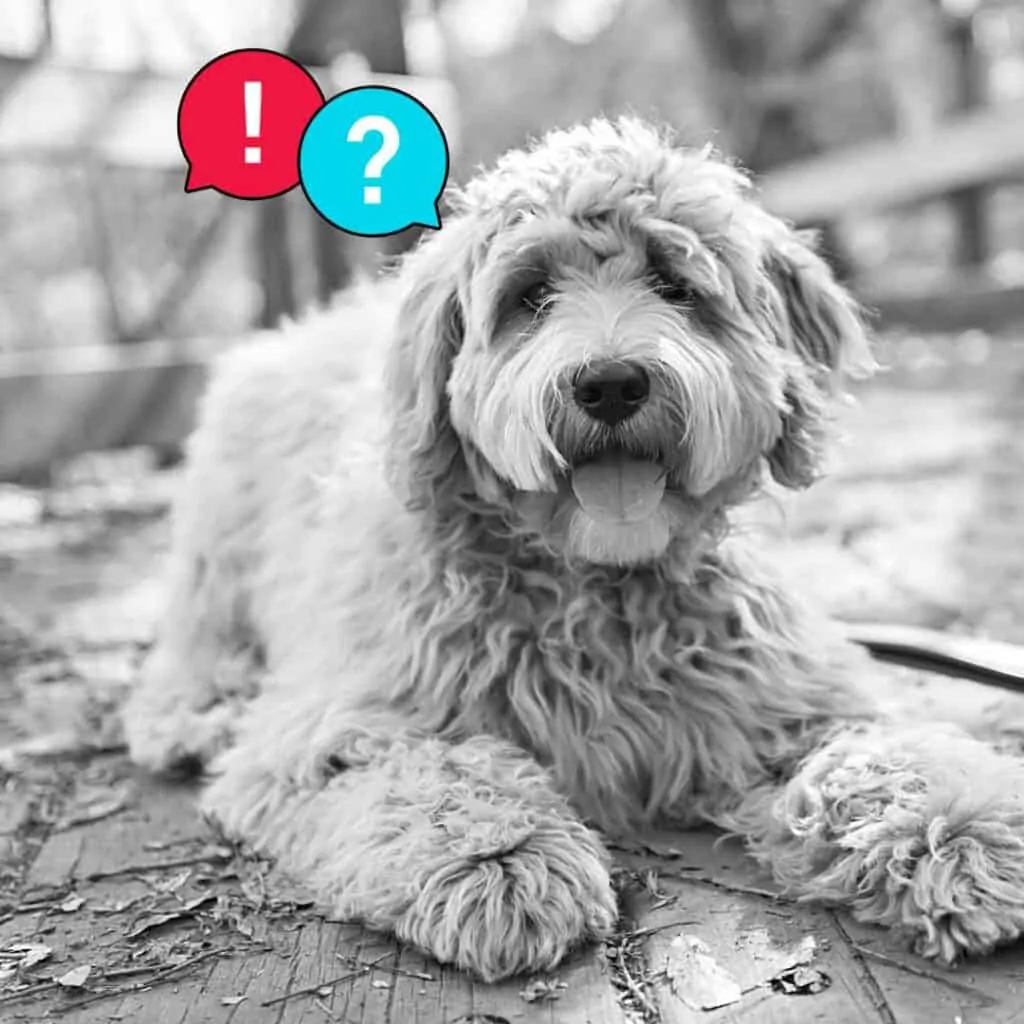
For a hybrid breed like a Goldendoodle, it’s hard to know how much shedding will occur. One side of their family is the Golden Retriever. This dog breed sheds a fair amount all year round, especially during the fall and spring. The other side is the Poodle, which still sheds, but instead of the fur falling on the floor, it gets caught in the dog’s dense curls.
Most Goldendoodles indeed tend to lean more toward the Poodle side, shedding less and therefore being more allergy-friendly. Ultimately, though, it could go either way. Suppose their coat behaves more like a Golden Retriever. In that case, you may find yourself dealing with allergic reactions, and you’ll have to clean up a lot of furs.
How to predict what type of coat a Goldendoodle puppy will have.
If it’s more like a Poodle, you won’t have to worry as much about things like allergies and to have to sweep up hair, but you’ll probably have to take them to be groomed a lot more.
Regardless of which type of coat your Goldendoodle has, it’s essential to keep in mind that Goldendoodles are not low-maintenance dogs in the same way that a Golden Retriever is.
Their fur can grow long and get into their eyes, and they typically need to be groomed about every six to eight weeks. They’ll also need to be brushed regularly to keep their fur mat-free. All that grooming can get expensive, so you may want to learn how to give them a trim at home. (Pro tip? Get a grooming table specifically for a Goldendoodle-sized dog – it makes DIY grooming a breeze).
Aggression and Biting
Goldendoodles are known for being amiable and approachable dogs. However, every dog is different, and there is still a chance that an improperly socialized Goldendoodle will begin to display aggressive behaviors around strangers or other dogs.

This reaction is mainly because of the dog’s loyalty to you as their owner and their desire to please and protect you.
You can teach your dog to stay calm when meeting new people or animals by making sure to introduce them to unfamiliar situations regularly from an early age. Do so slowly at first to avoid scaring them and making the aggression problem even worse.
Final Thoughts
Goldendoodles are a fantastic family pet, but they don’t come without some flaws that potential owners should be aware of before they bring their new best friend back home.
Always make sure to do your research on any dog you’re thinking about adopting, and if you can meet the dog in person before you take them home.
This will help you be sure that you’ve found the perfect new addition to your home and your life.